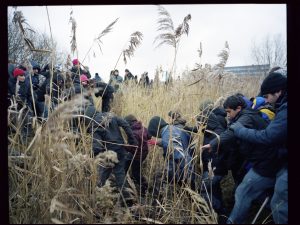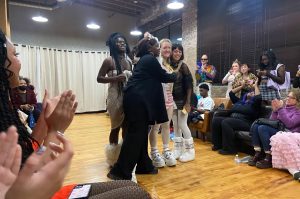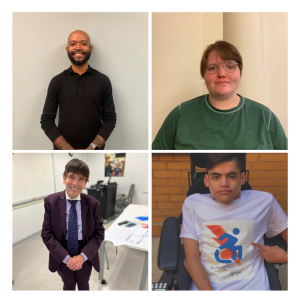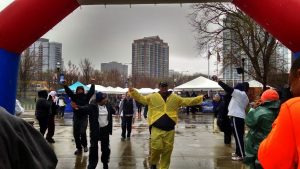Many teens walk through the city with the brightest of smiles on their faces, but with uncertainty just beneath the surface.
Some young adults in Chicago don’t know where the next meal is coming from, consider survival a priority, and finding a place to rest becomes a responsibility. Inconsistency is daily living.
In the Humboldt Park community there has been an increase in teen homelessness and a higher demand for public shelters, community activists said.
Omaira Vega, former Humboldt Park resident, recollected her darkest memories being abused by her mother. She was kicked out of her home at the age of 17 and lived a nomadic lifestyle ever since. She lived with other family members and friends, but could not find stability in any environment.
“I moved in with my father who lives in Humboldt Park. It’s not the best neighborhood to live in, but I didn’t have any other option,” Vega said.
Her father’s girlfriend eventually became what Vega described as a “nuisance” and grew hostile during her stay, she said. This led to another departure.
“After my dad kicked me out, I moved in with a boyfriend at the time,” Vega said. “His mom let me live with them. I was working and taking care of myself. I was just stationed there so I had a place to sleep and shower.”
Vega’s former boyfriend eventually became abusive, and she then found herself traveling house to house with friends. She now resides with her current boyfriend. She is employed full-time and aspires to finish school.
Chicago Public Schools have identified a 31 percent increase in unaccompanied youth this past year. According to Nicole Amling, director of public policy at the Chicago Alliance, 4 percent of people who entered the Chicago homeless system ranged from ages 13 to 17 and 18 percent ranged from ages 18 to 30.
Kristina Lasky, a resident at Vida Sida’s housing program El Rescate, moved to Chicago from Shanghai, China, and was adopted at the age of two. At 12 years old she was kicked out of her home. From then on she migrated staying with friends and in homeless shelters.
Lasky’s destination to the El Rescate residency was not planned.
“I heard about the program through a friend last minute,” Lasky said. “It’s nice here. We all get along and help each other make curfew. Every day is a surprise.”
The El Rescate program became a place of not only shelter, but a sense of belonging for Lasky. Before her stay, Lasky said she would hang around the Boystown area and found “trouble” for herself. She is currently enrolled at Truman College and has been searching for work.
“Kristina was really quiet and was always irritated and now she’s more comfortable,” said Greta Floding, risk manager at El Rescate. “The first time she opened up to me was a memorable moment because she trusted me.”
Lasky said she wants to become a social worker, get her associate’s degree and transfer to a four-year college.
“I want to be happy and prove my family wrong.”
Los Angeles native Adrian Arizmendi moved to Chicago two years ago. After coming out to his parents, his father then kicked him out. In Los Angeles, Arizmendi had a better idea of where he would stay—whether it be at a friend’s house or his boyfriend’s house.
“[In Chicago] I’d stay with friends and even strangers that would open their home to me,” Arizmendi said. “I even had to steal to survive.”
Arizmendi found his sense of place with the El Rescate program as well. El Rescate was the first housing shelter he’s lived.
“I’m grateful for everything,” he said smiling. “They listen to me and treat me like family. My own family doesn’t even treat me like family.”
Arizmendi is enrolled at the Art Institute for fashion design and plans on studying law for civil rights.
Housing shelters in the Humboldt Park community such as El Rescate and La Casa Norte provide self-sufficiency, intervention and identity affirming. The housing services allow homeless teens to gain stability and build a new life for themselves.
They have an opportunity to have adult mentoring and influence, and it helps them move into adulthood, Sol Flores, executive director of La Casa Norte said.
Zenaida Lopez, program coordinator of Vida/SIDA, worked 16-hour days with a small group to decorate the El Rescate housing; they painted, dusted, installed beds and adorned the rooms with vibrant-colored sheets and curtains.


“I was proud,” Lopez said. “It was a place they can call home. I took a deep breath and thought ‘we did it.’”
The services all together confront the issue of teen homelessness and provide a brighter future for underprivileged youth; however the number of homeless youth continues to rise and the demand for housing has grown.
“In Chicago there are only about 200 beds available for homeless youth and there’s about 2,000 to 5,000 homeless teens living in the city,” Flores said.
El Rescate houses six residents and waits on two more to fill in the empty rooms. There is a long waiting list of countless teens that long to be sheltered.
“As a mother it pains me,” Lopez said. “I want to take them all in. Hopefully we are able to house 40 to 50 residents soon. We know these kids are struggling.”





















Be First to Comment